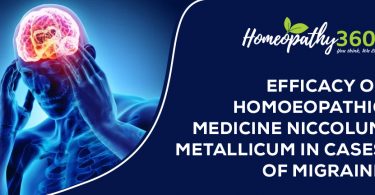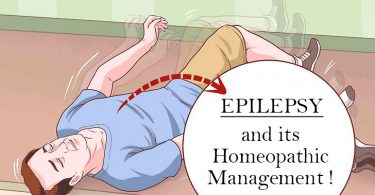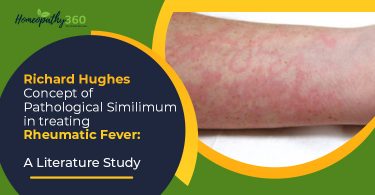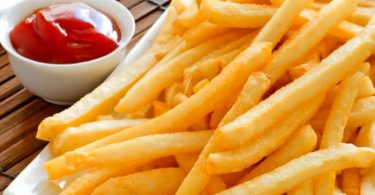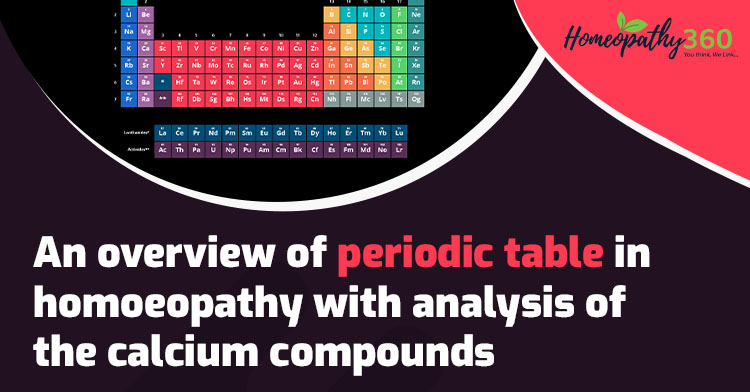
Abstract – The periodic table represents 118 elements discovered so far of which many elements and their compounds are well proved, some are partially proved, some are only clinically known and others are infrequently or not utilised as medicines. With the advancement of biochemistry the role of these elements on human biology are much better known which will help the analytical physician for better understanding of symptomatology. Calcium is one of the most widely distributed element in nature and has a vital role in living beings. A study of role of calcium in complex human body with a comparison of symptomatology will help the better application of homoeopathy. The article is aimed to bridge the time lapse between the old mineral materia medica and modern-day updates.
Keywords– Periodic table, Homoeopathy, Calcium compounds, Materia Medica.
Abbreviations- HCl – hydrochloric acid, HSS – Hale’s Special symptomatology, MMP – Materia Medica Pura, AE – Allen’s Enclycopaedia, HGS – Hering’s Guiding Symptoms, CD – Hahnemann’s The Chronic Diseases.
Introduction- The reason behind arranging elements in periodic table is to have ease in understanding the properties, comparison and analysis. Since elements shows similarity with few differences belonging to the same group or period in periodic table. This kinship (sharing of chemical properties) between elements of same group seems to be present in medicinal symptoms and actions on human body. Minerals have been used as medicines since antiquity but it was Hahnemann who put the rational use of these minerals in the treatment of chronic disease. He mentioned in his work ‘The Chronic Diseases’ that minerals constitute the most important anti-psoric remedies. Continuing with the same line of thought Dr Hering proved mineral remedies further. This legacy of Hahnemann and Hering was further taken by Otto Lesser (formerly physician-in-chief at Stuttgart Homoeopathic Hospital) and the result was in the form of ‘Textbook of Homoeopathic Materia Medica Inorganic Medicinal Substances’. Although this work needs upgradation both from the point of biochemistry and expansion of number of calcium remedies and its symptomatology. This article excludes the modern way of understanding mineral drugs from periodic table based on hypothetical explanations and thus restricting itself to the scientific domain of biochemistry, proving, clinical symptomatology and its therapeutic application.
Discussion
The name calcium was derived from Latin word “calx” (lime). Davy was the first to prepare the metal by electrolytic method in 1808. The pure metal was obtained by Moissan in 1898 by reduction of calcium iodide with metabolic sodium1. Present in II A group in Mendeleev’s periodic table. It is silvery white metal, which is malleable and hard. It burns in air forming oxides. It has great affinity towards oxygen.
Calcium is used as a drying agent in preparation of alcohol, for absorbing air from castings. It removes lost traces of air from noble gases and to obtain higher vacuum and for removal of sulphur from petroleum. It is used in the preparation of beryllium, chromium, thorium.
| Tissue | Normal values |
| Serum | 9 – 11 mg/ 100 ml |
| Muscle | 70 mg / 100 gms |
| Nerves | 15 mg /100 gms |
| CSF | 5 mg / 100 gms |
Tab. 1.1 showing normal values of calcium in different human tissues.
Pathophysiology of calcium
Free calcium ions are very important in regulation of neuromuscular irritability and hormonal control. It regulates acetylcholine. Calcium action is parasympathetic more than sympathetic. It stimulates parietal cells of stomach which secrete HCl. Calcium activates number of enzymes including pancreatic lipase, adenosine triphosphatase and myosine kinase.
Action on
Blood – Calcium stimulates activation of clotting factors in the blood. It stimulates lymph gland and thymus gland.
Heart – Calcium increases contractility of cardiac muscle during systolic phase.
Uterus – Calcium increases the activity of gravid uterus whereas it decreases the activity of non-gravid uterus.
Bones – Calcium ion get mobilized from Calcium depots during acidic conditions, which leads to osteoporosis.
Thus, the sphere of actions of calcium is on muscles, tendons ligaments, ducts tubes, bones, blood and blood vessels, nerve cells and its axons, pleura, peritoneum and synovial membrane, connective tissue, endocrine glands, etc3.
Calcium compounds used as remedies
| Sl. No. | Calcium remedies | Formula | Proved by | Source Materia Medica |
| Calcarea acetica | Ca(C2H3O2)2 | Samuel Hahnemann | MMP14, AE15 | |
| Calcarea arsenicosa | Ca3(AsO4)2 | Constantine Hering | HGS16 | |
| Calcarea bromata | CaBr2 | Not proved | HSS17 | |
| Calcarea carbonica | Ca CO3 | S. Hahnemann | CD9, AE15, HGS16 | |
| Calcarea caustica | CaH2O2 | A.W. Koch | AE15 | |
| Calcarea chlorinata | CaOCl2 | Not proved | ||
| Calcarea citrica | Ca3(C6H5O7)2 | Not proved | ||
| Calcarea fluorica | Ca F2 | J.B. Bell | HGS16 | |
| Calcarea formica | Ca(HCO2)2 | Not proved | ||
| Calcarea glycerophosphate | C3H7CaO6P | Not proved | ||
| Calcarea glutamica | C10H16CaN2O8 | Not proved | ||
| Calcarea gluconica | C12H22CaO14 | Not proved | ||
| Calcarea hypophosphorosa | Ca2PH2O2 | A. R. Barrett | ||
| Calcarea hydroxidum | Ca(OH)2 | Not proved | ||
| Calcarea hydrosulfide | CaH2S2 | Not proved | ||
| Calcarea iodata | CaI2 | W. James Blakely | AE15 | |
| Calcarea lactica | Ca6H10O6, 5H2O | Not proved | ||
| Calcarea lactica natronata | Not proved | |||
| Calcarea lactica phosphorica | Not proved | |||
| Calcarea muriatica | CaCl2 | Not proved | ||
| Calcarea nitrica | Ca(NO3)2 | Not proved | ||
| Calcarea ova tosta | Not proved | |||
| Calcarea oxalica | CaC2O4 | Not proved | ||
| Calcarea oxydata | CaO | Not proved | ||
| Calcarea phosphorica | Ca32PO4 | C. Hering | AE15, HGS16 | |
| Calcarea picrica | 2(C6H2 (NO2)3)OCa | Not proved | ||
| Calcarea renalis | Not proved | |||
| Calcarea silicata | CaSi2O5 | |||
| Calcarea sulph stibata | Not proved | |||
| Calcarea sulphurica | CaSO4 | C. Conant | AE15, HGS16 | |
| Hepar sulphuris calcareum | CaS | S. Hahnemann | MMP14, AE15, HGS16 | |
| Lapis alba | CaF6Si | Not proved | ||
| CD – Hahnemann’s Chronic Disease; MMP- Materia Medica Pura; AE – Allen’ Encyclopaedia; HGS – Hering guiding symptoms; HSS – Hale special symptomatology. |
Tab. 1.2 Showing calcium compound remedies, formulae, prover and source materia medica
Calcarea carbonica, Hepar sulphuricum and Calcarea phosphorica are well proved and hence are not described below.
Calcarea acetica6, 17
Calcarea cachexia, inflammation of mucous membrane; Membranous exudation. Large flakes of exudation. Dyspnoea> bending shoulder backward. Excruciating pain in open cancer. One sided pain in right eye with headache and lachrymation of right eye. Vertigo < walking in open air. An obstinate case, in which many remedies failed, has been cured by this remedy. Adipositas. Migraine with great coldness in the head and much gastric acidity (Clotar Mueller). Recommended symptomatic by Bahr in chronic catarrh of stomach or intestines in children.
Calcarea arsenicosa6, 9, 15
Complaints of fat women around climacteric; when slightest emotion causes palpitation. Complaints of drunkards after abstaining. In children with enlarged liver and spleen. Physical anxiety. All complaints left sided. Chilly patient. Mucous membrane joining skin (parts) are hot. Desire for soup, cold water. Ailments after abuse of quinine. Aggravation – slight exertion, error in diet, cold air tabes mesenterica and chronic pneumonic phthisis with haemoptysis (H. Nankiwell.) Want of appetite in phthisis pulmon.
Calcarea bromata6,9
Removes inflammatory products from uterus. Fair and fatty children. Fretfulness and sleeplessness. Fearful. Children of lax fibre, nervous and irritable, with gastric and cerebral irritation. Tendency to brain disease. Insomnia and cerebral congestion
Calcarea caustica9
Fuzzy feeling. Tooth feels elongated. Toothache < 2 am. Remedies for all kinds of inflammation. Pain – sticking, tearing, throbbing. Thinking is very difficult. Right sided symptoms. Foreign body in right eye. Tearing pain in articulation of right jaw. Left sided symptoms. Tearing in left tendoachilis. Tearing in left heel
Agg – Washing, Hanging down limbs
Amel – Motion
Calcarea chlorinata12,17,18
Boils and carbuncles. Diphtheria. [Niedhard]. Said to remove the odor of onions and garlic from the breath. [Pulford – Graphic drug pictures]
Calcarea fluorica6,9,10
This tissue salt relaxes the elastic fibres, especially of veins and glands. Glands enlarge and become stony hard. Veins dilated and become varicose, inflamed. It disperses bony frowths, osteo-sarcoma, exostosis, after injury. Deficient enamel of teeth. Removes the tendency to adhesions after operations. Induration of stony hardness, tonsils, tumors neck, after injury, margins of ulcers etc. Fistula. Sluggish temperament. Nails hypertrophied. Nodes in breast.
Aggravation – Beginning of motion, Cold weather, sprains
Amelioration – Continued motion, warm application, heat, rubbing
Calcarea hypophosphorosa9,10,17
In action like Calcarea phosphorica better in many cases where Calcarea carbonicum and Calcarea phosphorica are indicated, than these.
Diarrhoea of Tabes mesentrica. Habitually cold extremities. Veins prominent like whip cord. Pale, weak person. Loss of vital fluid. Perspiration profuse. Debility, emaciation. Headache < depression. Recurrent abscess, abscess around knee joint and tibia. Asthma or dyspnoea> open air. Much used Recommended in early stage of phthisis pulmon. Neurasthenia, with profuse night-sweat, pale and emaciated countenance, loss of appetite and virile power. It is preferred as being particularly adapted to the treatment of suppurative inflammation of the middle ear in phthisical subjects.
Amelioration – full of stomach, cup of milk
Calcarea iodatum6,9
Scrofulous affections, especially enlarged glands, tonsils. Breast tumour. Enlarged tonsils filled with crypts. Pneumonia – greenish expectoration. Indolent ulcers accompanying varicose veins. Sensation as if head wasn’t, yet was. Constant evacuation of large quantity of wind downward. Bitter taste > tobacco. Skin – eruption disappearing and reappearing in other parts > much scratching.
Calcarea lactica6,9
Coaguability diminished. Anaemia. Hemophilia. Urticaria. Nervous headache. Headache with oedema of eyelids, lips, hands. A remedy for sprue. Zig zag lines before headache. Vasomotor rhinitis.
Calcarea lactica natronata6,9
Hay fever, asthma, urticaria. Chilblains. Metabolic alkalosis. Haemorrhage from lungs.
Calcarea lactica phosphorica6
Cyclic vomiting and migraine
Calcarea muriatica6,9
Rademacher’s liquor.
Boils, porrigo capitis, eczema of infants. Angioneurotic oedema
Calcarea ova tosta6,9
Leucorrhoea – albuminous like white of egg. Backache – as if broken into two. Warts. Pains of cancer.
Calcarea oxalica9,19
Cancer of left breast with intense agonizing pain. (Guernsey)
Calcarea picrata6,9
Eruption on skin least covered with muscle or nearly of bones, cartilages near to skin, e.g. shin bone, coccyx, auditory canal, etc. Dry, scurfy eruption. Acne in young adolescent. Prostration and fatigue. Prefollicular eruption. Styes. Chronic and recurrent abscess. Removes the extreme prostration of picric acid.
Calcarea renalis6,9
Arthritic nodosities. Rigg’s disease. Accumulation of tartar of teeth. Renal calculi. Stony hardness on extensor tendon of right middle finger.
Calcarea silicata6,9,10
Hydrogenoid constitution. Chilly patient – lack of vital heat. Periodicity. Sensitiveness. Dreams of death, of murderer. Talks with dead people. Desire – Sour things, milk. Aversion – meat, milk. Greenish expectoration. Lack of confidence. Thinks disease is incurable. Nails breaks easily.
Aggravation – Wet weather, evening, cold food, cold drink
Amelioration – Lying on back
Calcarea sulphurica6,9
Affects glands, mucous membrane, bones and skin. Torpid glandular swelling. Cystic tumors. Fibroids. Tendency to suppuration, after pus has found its vent, comes within the range of this remedy. Pus is thick, yellow, lumpy, bloody. Mucus discharges; are yellow, thick and lumpy. Recurrent on running abscess. Ulcers, malignant, corneal, deep. Fistula. Infants with bloody coryza, diarrhoea or eczema. Burns and scalds after suppuration starts in. Malignant growth after ulceration has set in.
Aggravation – Drafts, touch, cold, wet, heat of room
Amelioration – Open air
Calcarea sulph stibata6
Acts as a haemostatic and absorptive in uterine myoma
Lapis Alba6,10
It is silico-fluoride of calcium, a remedy for new growth and glandular affections. Pains are burning, stinging, shooting. Uterine carcinoma, fibroids, tumours, with intense burning pains and profuse haemorrhages. Enlargement of glands especially cervical which are elastic and pliable rather than stony and hard. Sarcoma, Lipoma.
Conclusion
In conventional medicine, role of calcium is primarily as a supplement. But to a homeopath it is one of the indispensable remedies indicated in day-to-day practise. In fact, Calcarea carbonica – the leading medicine amongst calcium compounds, is one of the Hahnemann trios of anti-psoric remedies. With the advancement in technology, biochemistry and pharmacology has undergone several breakthrough which throws light on calcium and its bio mechanics further. Master has already warned of empty speculations and empirical use of drugs several times in his literature and stressed on drug proving with limited scope of clinical additions in materia medica. This article fortifies above doctrine of Hahnemann.
References
- Weaver CM, Heaney, R.P. Calcium in human health . (2nd ed.). USA: Humana press; 2018.
- Krebs J, Michalak, M. Calcium: A matter of life and death. London: Elsevier Publications ; 2017.
- Satyanarayana U, Chakrapani, U. Biochemistry . (5th ed.). London: Elsevier Publications ; 2018.
- Boericke W. Pocket Manual of Homoeopathic MateriaMedica and Repertory. 51st Impression. New Delhi: B. Jain Publishers (P) Ltd.; 2011..
- Allen HC. Keynotes and Characterstics with Comparisons of Some of the Leading Remedies of the Materia Medica with Bowel Nosodes. Reprint Edition. New Delhi: B. Jain Publishers (P) Ltd.; 2004.
- Hahnemann S. The Chronic Diseases: their peculiar nature and their homoeopathic cure. Kolkata: Rup Publication; p.35.
- Clarke JH. A Dictionary of Practical Materia Medica. New Delhi : B Jain Publishers: 2010.
- Phatak, SR. Materia medica of Homoeopathic medicines. New Delhi : B Jain publishers; 2012.
- Allen TF. A primer of Materia Medica for practitioners of homoeopathy. Philadelphia: Boericke and Tafel; 1892.
- Hughes R. The Principles And Practice Of Homoeopathy. New Delhi: B Jain publishers; 2012.
- Hahnemann S. Materia Medica pura. Reprint ed. New Delhi: B Jain publishers; 2012.
- Allen TF. Encyclopaedia of Pure Materia Medica. Reprint ed. New Delhi: B Jain publishers; 1998.
- Hering C. The Guiding symptoms of our Materia Medica. Reprint ed. New Delhi: B Jain publishers; 2006.
- Hale EM: Special symptomatology and therapeutics. Reprint ed. New Delhi: B Jain publishers; 1998.
- Hansen O. Textbook of Materia Medica and therapeutics of rare Homoeopathic remedies. Reprint ed. New Delhi: B Jain publishers; 1996.
- Pulford A. Homoeopahic Materia medica or graphic pictures and clinical comments. Reprint ed. New Delhi:B Jain publishers; 2010.
- Guernsey HN. The application of the principles and practice of Homoeopathy to obstetrics, and the disorders peculiar to women and young children. Reprint edn . New Delhi: Nabu press.
About the authors
- Dr Navin Kumar Singh Lecturer, Department of Repertory, The Calcutta Homoeopathic Medical college and Hospital, Kolkata.
- Dr Debanjan Chowdhury, PGT, The Calcutta Homoeopathic Medical college and Hospital, Kolkata.
- Dr Harshit Garg, PGT, National Institute of Homoeopathy, Kolkata.
- Dr Sheetal Mishra, GDMO, Dr. R.P. District Hospital Mayabunder, North Andaman.
About the Author:
Authors- Dr Navin Kumar Singh1, Dr Debanjan Chowdhury2, Dr Harshit Garg3, Dr Sheetal Mishra4


